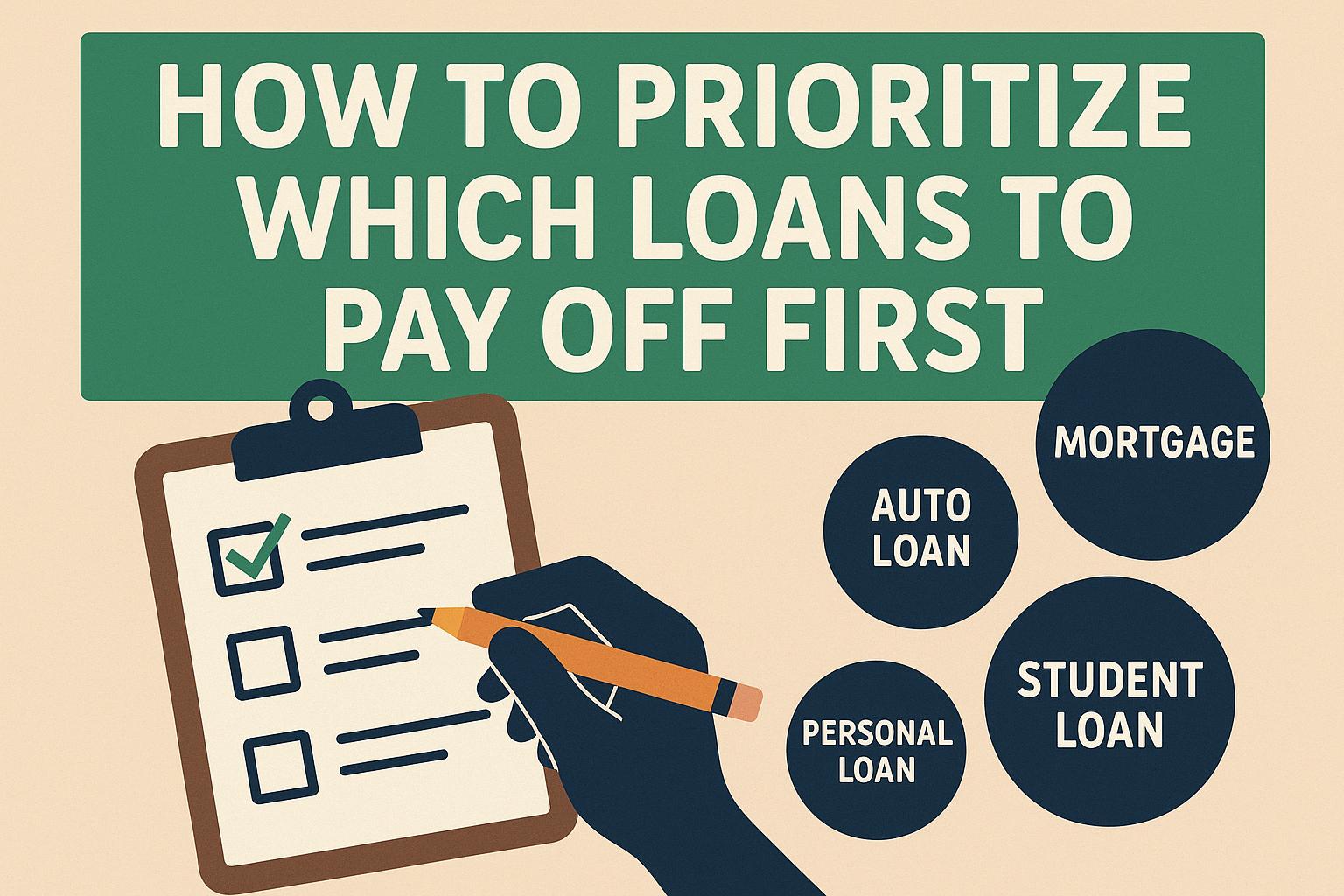Understanding Loan Prioritization
When managing multiple loans, determining which to pay off first can significantly impact your financial well-being. By strategically choosing which loans to prioritize, you can save money on interest and improve your financial stability. Paying attention to various factors, such as interest rates, loan terms, tax benefits, and your personal financial situation, is vital to making informed decisions about loan payments.
The Importance of Interest Rates
One of the key factors to consider when prioritizing loans is the interest rate. Typically, loans with higher interest rates should be addressed first as they cost more over time compared to loans with lower interest rates. By reducing the principal balance on these loans earlier, you can decrease the overall interest paid. Understanding how interest rates affect the cost of borrowing is crucial for effective financial management.
Debt Avalanche Strategy
The debt avalanche strategy is one approach that takes interest rates into account. With this method, you focus first on paying off loans with the highest interest rate, while continuing to make minimum payments on all other debts. This strategy results in the fastest reduction of overall debt and interest. While it might require more perseverance initially, as it might take longer to eliminate the first debt completely, it’s mathematically sound and can save more money in interest over time.
Debt Snowball Strategy
Alternatively, the debt snowball strategy focuses on loan balances rather than interest rates. By paying off the smallest loan balance first, you gain a psychological boost and a sense of accomplishment, which can motivate continued progress. After clearing the smallest loan, move to the next smallest, and so on. This strategy is particularly appealing to those who value the feeling of quick wins to sustain motivation. It’s a more emotionally driven method compared to the debt avalanche strategy.
Considering Loan Terms and Types
Apart from interest rates, loan terms and types are also crucial in prioritizing loans. Some loans have penalties for early repayment, while others might have special terms that provide benefits after a certain period of repayment. Understanding these aspects can prevent unnecessary financial loss and optimize your repayment plan.
Secured vs. Unsecured Loans
Loans can be categorized into secured and unsecured loans, each with different implications for loan prioritization. Secured loans, such as mortgages or auto loans, are backed by collateral, meaning failure to repay these can result in losing the asset tied to the loan. While these loans might have lower interest rates, they pose a risk to your assets if not repaid. Unsecured loans, like credit card debt and personal loans, do not have this risk but often carry higher interest rates. It’s usually advisable to prioritize unsecured loans if they have high interest rates, but don’t neglect secured loans due to their potential long-term consequences.
Tax Deductibility
When assessing which loans to pay off, consider the tax implications. Some loans, such as student loans and mortgages, may offer tax benefits. These benefits can reduce the effective cost of the loan, making it less of a priority compared to others without such benefits. Understanding the tax deductibility of interest paid on certain loans can play a crucial role in how you prioritize debt repayment.
Assessing Your Personal Financial Situation
While general strategies are helpful, it is crucial to consider your unique financial situation. Factors such as cash flow, emergency savings, and personal financial goals can all influence the best approach for you. Tailoring your debt repayment strategy to suit your financial circumstances ensures a more personalized and effective plan.
Cash Flow Considerations
Ensure you have enough cash flow to cover all minimum loan payments to avoid penalties and negative credit impacts. Falling behind on payments can lead to added interest costs and adversely affect your credit score. Beyond minimum payments, allocate extra funds strategically towards prioritized debts. This ensures that you are progressing towards becoming debt-free without straining your financial resources.
Building an Emergency Fund
Before aggressively paying off loans, consider building an emergency fund. This fund can cover unexpected expenses and prevent additional debt accumulation, ultimately aiding in maintaining financial stability. An emergency fund acts as a financial buffer, allowing you to manage unforeseen expenses without derailing your debt repayment plan.
Conclusion
Effectively prioritizing loan payments can aid in faster debt reduction and lower overall interest costs. Whether you choose the debt avalanche or snowball strategy, or a combination of both, recognizing your personal financial situation is key. Each strategy has its benefits, and by understanding your financial goals and circumstances, you can tailor your approach to make the most effective progress toward becoming debt-free.
For more personalized advice, it might be beneficial to consult with a financial advisor or explore resources such as financial planning websites. By understanding the nuances of your financial situation and the loans you are managing, you can develop a comprehensive plan that enhances your financial health and secures future financial stability.

